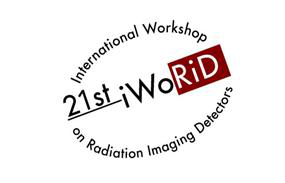The introduction of direct electron detectors over the past fifteen years has opened up new possibilities in all branches of electron microscopy. In particular, monolithic detectors with thin Si sensors have been used to great effect for imaging in the life sciences. However, they typically have slower readout and are insufficiently robust for routine exposure to the intense central spot of a...
In order to tackle current and future challenges in photon science it requires novel concepts of ultra fast photon counters. Especially for photon pulses with ultra-short durations at short wavelengths as delivered currently by synchrotrons and free electron lasers his leads to a demand for hard X-ray detectors providing sufficient time resolution to exploit the potential of such ultra-short...
In view of the HL-LHC upgrade the use of Chemical Vapor Deposited (CVD) diamond has been proposed as an efficient alternative to conventional silicon-based devices [1]. Diamond detectors are more robust to radiation damage, the high carriers mobility allows faster signal collection when compared to silicon, while retaining extremely low leakage currents. This could be of particular interest in...
3D diamond detectors constitute a promising design to improve the radiation hardness of the already radiation hard diamond detectors. This geometry is achieved by graphitising column-like electrodes inside the diamond bulk. The fabrication process is performed using a femto-second laser. In this work we show a systematic study of the characteristics of the electrodes fabricated in two CVD...
A high pressure gas TPC detector has been developed in IHEP, in China, which aims to measure the reactor neutrino energy spectrum by elastic scattering with an energy resolution of less 3%@1 MeV. The whole detector with a 200-kg target will installed nearby reactor of about 20 m. On the one hand, the energy spectrum can provide an input with a model-independent nuclear database for Jiangmen...
